I’ve been thinking a lot about spark birds lately. You know, that one bird you encounter out of seemingly nowhere that makes time slow to a stop. The world dissolves until there is only you and this bird in this moment. A bird so arresting, so captivating, it sparks something deep inside, kindles a flame, and consumes your non-birding self until nothing is left but a smoldering pile of ash. And from that heap of soot rises the birder that had lain dormant in you from birth. Trumpets sound. A shaft of light pierces the heavens, illumining the bird as angels sing. The moment causes a seismic shift, altering the course of your life forever. It’s a phenomenon not unlike what the Spanish call a “flechazo,” being struck by cupid’s arrow, AKA love at first sight, only in place of the arrow imagine being pierced by a razor-sharp beak.
At least that’s how I imagine it. Never happened to me. Not with a bird anyway.
I do have experience with love at first sight. I met my wife Alex on a Wednesday in 1999 in Athens, Ohio, where we were seniors at Ohio University. My roommate at the time was dating Alex’s best friend, Cleveland-based artist (and godmother to our oldest son), Gina Washington. Gina had a hunch Alex and I would hit it off, and so Alex was invited to dinner one April night. Boy was she right! When Alex walked into the house for the first time, I was instantly bewitched by the most beautiful black eyes I’d ever seen. That was some flechazo all right. We talked until 2 a.m. By that Saturday, we were living together, and although we couldn’t have known it at the time, it turned out these two birds were mating for life.
But I can’t recall single bird in a single moment that unlocked my incurable passion for birds. The more I think about it, the more I realize the birder in me was teased out over several decades by a variety of species. What comes to mind is a Bic lighter that’s critically low on butane. You spin the wheel over and over, sparks leap, but the flame never ignites… until it does. Here’s my attempt to compile a list of mini-sparks that finally turned me into a birder.
The Seminal Five
Have you ever had a very gradual epiphany? A long, slow realization that you love something that’s been right in your face the whole time? That’s this quintet, five birds I knew just by virtue of growing up in a house with feeders. Now on the verge of 50, I can’t imagine a home without feeders and these species in the yard every day of the year.
Northern Cardinal. My favorite bird. I’ve rhapsodized enough about Northern Cardinals on this Substack already, so I’ll paraphrase—Cardinals are probably the first bird I can remember learning and loving. Yes, they’re as close to perfect as a bird can get. No, they’re not so perfect they should be the official bird of seven freaking states.
Black-capped Chickadee. My childhood home had no central air. Windows were flung open when the weather in Akron, Ohio turned warm in spring, ushering in the sweet two-note song of the Black-capped Chickadees who frequented the feeder. That cheerful sound was drowned in curses come July, when the house got So. Fucking. Hot.
Tufted Titmouse. BZZZ-BZZZ-BZZZ-BZZZZZZ!!! Another backyard essential of Northeast Ohio, the original angry bird has one of the sweetest faces and perhaps the greatest name in all of birddom, but is also possibly the biggest scold of the 436 birds I’ve encountered in my life.
Mourning Dove. I believe the sound more than the sight of birds captivated me at an early age. The Mourning Dove’s soft, plaintive Whooooo who-who was a favorite track in my summer playlist. I love those plump, vapid beauties. The way they park themselves in plain view of ravening hawks is like the placard in a diner window that reads Come in, we’re open!
American Robin. Okay, not a feeder bird, but the quintessential neighborhood bird. No lawn in the USA is complete without a foraging American Robin. Who hasn’t taken a moment to observe a Robin tugging an unwilling earthworm from the dirt? And who hasn’t taken another moment to hose what’s left of that earthworm from the hood of the car?
The Texas Two-step
New places = new birds. Familiarity “sparked” my love of those yard birds, but have you ever been floored by a bird you’ve never heard of before? Our family took two birding vacations in south Texas when I was 17 and 18 years old. Those trips represent my impactful, if brief, transition from passive to active birding—that thing you do intentionally with binoculars and a field guide. Some birds I remember well from Texas (Pyrrhuloxia, Greater Roadrunner, Zone-tailed Hawk), while some I have no recollection of outside the notes I jotted in my field guide (Golden-fronted Woodpecker, Woodhouse’s Scrub-Jay, Canyon Towhee). Two birds, however, stand out among the rest because they blew my goddam mind.
Elf Owl. I didn’t see my first and only Elf Owl in a cavity in a saguaro. Mine was perched on a branch near our camp site in Big Bend National Park for what seemed like hours. I remember being mesmerized by it—how calm and cute and patient it was as onlookers gawked at the world’s tiniest owl. My only owl experiences to that point had involved the Great Horned and Barred varieties. As far as my seventeen-year-old self was concerned, owls were BIG. And now you’re gonna tell me I’m looking at an owl that’s smaller than some sparrows? As the kids might say, GTFOH 🤯
Green Kingfisher. The bird that inspired my logo. Most likely my grandparents’ final life bird, the one that gave such a shot of adrenaline to my grandfather’s 78-year-old body, he launched into a full sprint to see it. Green Kingfishers are amazing enough on their faces, but few know they have the power to temporarily cure dementia. Gramp’s mind, afflicted with Alzheimer’s, was clear as a bell when he chased that bird and jotted the sighting in his field guide. Correctly, I might add—we saw the bird at Santa Ana National Wildlife Refuge in Hidalgo County, TX, not Big Bend National Park, as I wrote. Thanks to my idiot brother for verifying the location.
Hoosier Re-spark
Of course, being sparked by a bird requires being open to being sparked. I did very little birding from 1994 until 2008, when Alex and I moved to West Lafayette, Indiana and settled into a house with a yard for the first time. Our wonderful pink house came equipped with a bird feeder that we kept filled. I had a full-time job, but I was vigilant on weekends. I kept a tally of yard birds. I got into it, but the rabbit hole hadn’t fully opened yet. It partially did when we discovered Celery Bog Nature Area, which became one of our most beloved parks to hike. I didn’t know it at the time, but Celery Bog is one of the premier birding spots in Tippecanoe County and host to a pair of birds that re-sparked my interest in birding beyond the feeders.
Yellow-billed Cuckoo. One May morning in 2011, as my dad and I were taking a birdwalk at Celery Bog, I saw a slender, long-tailed, elegant-looking bird moving slowly through the canopy. “I don’t know what that bird is,” I told Dad, who quickly IDed the Yellow-billed Cuckoo. I’m not sure what amazed me more, the bird itself or the fact that cuckoos were real birds and not a fun, fictitious component of a certain kind of clock.
Orchard Oriole. Now we come to it—the main reason I’ve been dwelling on spark birds lately and perhaps the one bird most responsible for dragging me out of my rut of feeder birding. I awoke early one spring morning to do some birding at Celery Bog and encountered a bird that was entirely foreign to me, a medium-sized songbird, gorgeous in its plumage of black and copper. I watched this mystery bird move around a tree in a meadow until it was gone and then pulled out the trusty Golden Guide I had stowed in my back pocket (a position since usurped by my phone and its manifold birding apps). I knew there were orioles outside the Baltimore variety, but had no idea there was more than one in the eastern US. I learned of the existence of Orchard Orioles 14 years ago, but I’ll describe how I felt then using the modern parlance—I was shook. The difference between this discovery and the Yellow-billed Cuckoo was I made this ID on my own. That felt good, and I wanted to feel it again.
Today, Orchard Orioles are no strangers to my main birding patch. We’ve even had them in the yard, but I’d never managed to photograph one to my liking. Until last month, when I found this convivial pair hanging out near the path on a perfect sun-bathed day at Pittsburgh’s North Park.
The Michigan Mixed Flock
My final spark came during the early throes of COVID. After having spent months drinking beer as a reaction to the pandemic, it was time to get my head and my physical health in order. Alex, who never misses her daily walk, had begun strolling through the defunct golf course across the street from our house in Meridian Township, Michigan and recommended I do the same. I did, but with binoculars. My first bird walk at the former Walnut Hills Country Club began on May 20th, 2020 at 7:30 a.m. A small, protected wetland sat between the golf course and the road, and in that wetland was a weeping willow where I almost immediately found a small mixed flock of warblers, including Tennessee, Blackburnian, Pine, Yellow, Nashville, and American Redstart. A half dozen warblers doesn’t sound like much for a May morning, but it was plenty for a beginning birder to sink his teeth into. I was hooked. My walks too became daily, and so did my birding. Five years later, it hasn’t stopped.
For some people, What’s your favorite bird? is an impossible question. For me, What’s your spark bird? is infinitely harder. I recognize this post is long enough, but I could have gone on. I could have talked about the White-throated and White-crowned sparrows in our yard in Indiana. Then there was the first ever Eastern Bluebird I saw at my grandparents’ house. Yep, it seems there’s no end to the birds that teamed up to spark me. My first flock of Wild Turkeys… a Christmas Bird Count Bald Eagle… the Celery Bog Green Heron…
But I’ll stop here. You get the point. It took a while, but you can consider me fully sparked.
If you’d like a more decisive spark bird story, check out “Trash Birds” from Robert Francis and his infuriatingly great Substack, Bird History.
The Sad, Surreal Fate of Walnut Hills County Club
In its time of limbo after closing, my hope for Walnut Hills was for Meridian Township to incorporate its 200 acres into the adjoining Towar Woods Preserve. Nothing doing for my hippie-dippie dream. The property was purchased for real estate development, but when plans to build way more houses than the township had an appetite for were thwarted, it was sold again, this time to billionaire Acrisure CEO Greg Williams. Dozens of no trespassing signs were soon erected, and that was the end of our Walnut Hills walks. Williams is an insurance mogul, not a real estate developer, and instead of 400 identical houses, he built the most garish McMansion you could imagine. I don’t mourn the loss of a golf course or a rash of cookie cutter homes, but it was sad to see wild plants and animals displaced by a lawn and a tasteless 30k square-foot castle. I also doubt the sound of Williams’ residential helicopter was what the people of Meridian Township had in mind. I hope he at least kept Neumie’s tree.
Featured Photo—Orchard Oriole
This is my favorite shot from that suite of Orchard Oriole photos and one of my favorite bird photos I’ve ever taken. Foremost, I think it’s a fun capture. This female was moving around the brush and I was fortunate to catch her head the second it popped through the foliage so inquisitively. I also think it’s a lovely ode to the color green. Finally, this picture also gives me a little perspective on just where I am as a birder. Had I been shown this photo with no context, I doubt I’d land on a correct identification right away. I’d get to it eventually, but there would be no immediate flash of recognition.
10/10 Recommends
The Serviceberry, Robin Wall Kimmerer
I’m needing a McMansion detox right about now, and revisiting The Serviceberry would provide the perfect cleanse. Potawatomi botanist Kimmerer asks her readers to imagine what could happen if the United States dialed down the cutthroat competitiveness that has theoretically given rise to an exceptionalism unparalleled in all human history. Kimmerer’s writing is hopeful yet sober—she knows capitalism isn’t going anywhere soon, but she does dare envision alternatives—gift economies and a culture of sharing in place of a hoarding mentality that has given rise to the Greg Williams of the world. Kimmerer seems genuinely awed by the gifts nature gives and simultaneously alarmed at our attempts to commodify everything, right down to the water we can’t live without. Throughout, she illustrates small examples of gift economies—the serviceberry plant that gifts berries to the birds and the people who grow them, the growers who share the berries with their neighbors, the little libraries dotting our neighborhoods and the big libraries that serve as the heart of a community, the farm stands inviting people to take what they like (within reason!) at no cost. I’ll definitely read this one again, and it will be required reading for my children.
That’s all for this week. Do you have a spark bird or birds? Do you believe in love at first sight, avian or human? Have you read The Serviceberry? What are your thoughts about a gift vs. a market economy? I want to hear all about it in the comments!👇
Until next time, thanks for reading, and don’t forget to (spark)bird your ass off!
nwb
I hope you enjoyed this discussion of the birds that spark us. Birding with BillBow’s weekly content will always be free, but you can help support my writerly and birderly dreams in the form of a paid subscription (save $10/year by choosing the yearly plan!).
Not up for an annual subscription? Consider buying me a beer instead. Nothing like contemplating spark birds while sipping a delicious, chilled lager.
This post was human generated. All photos by Nathaniel Bowler.




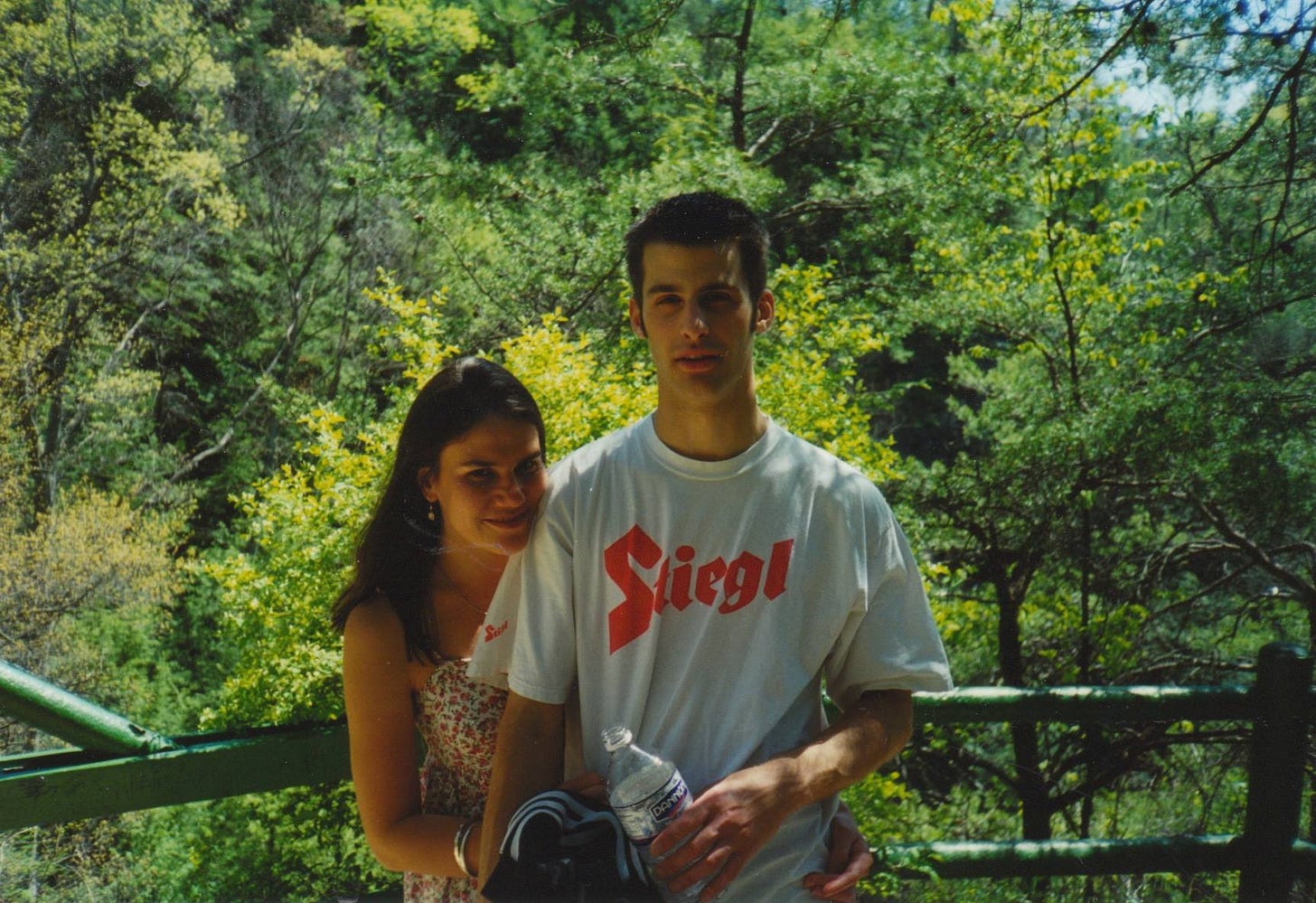
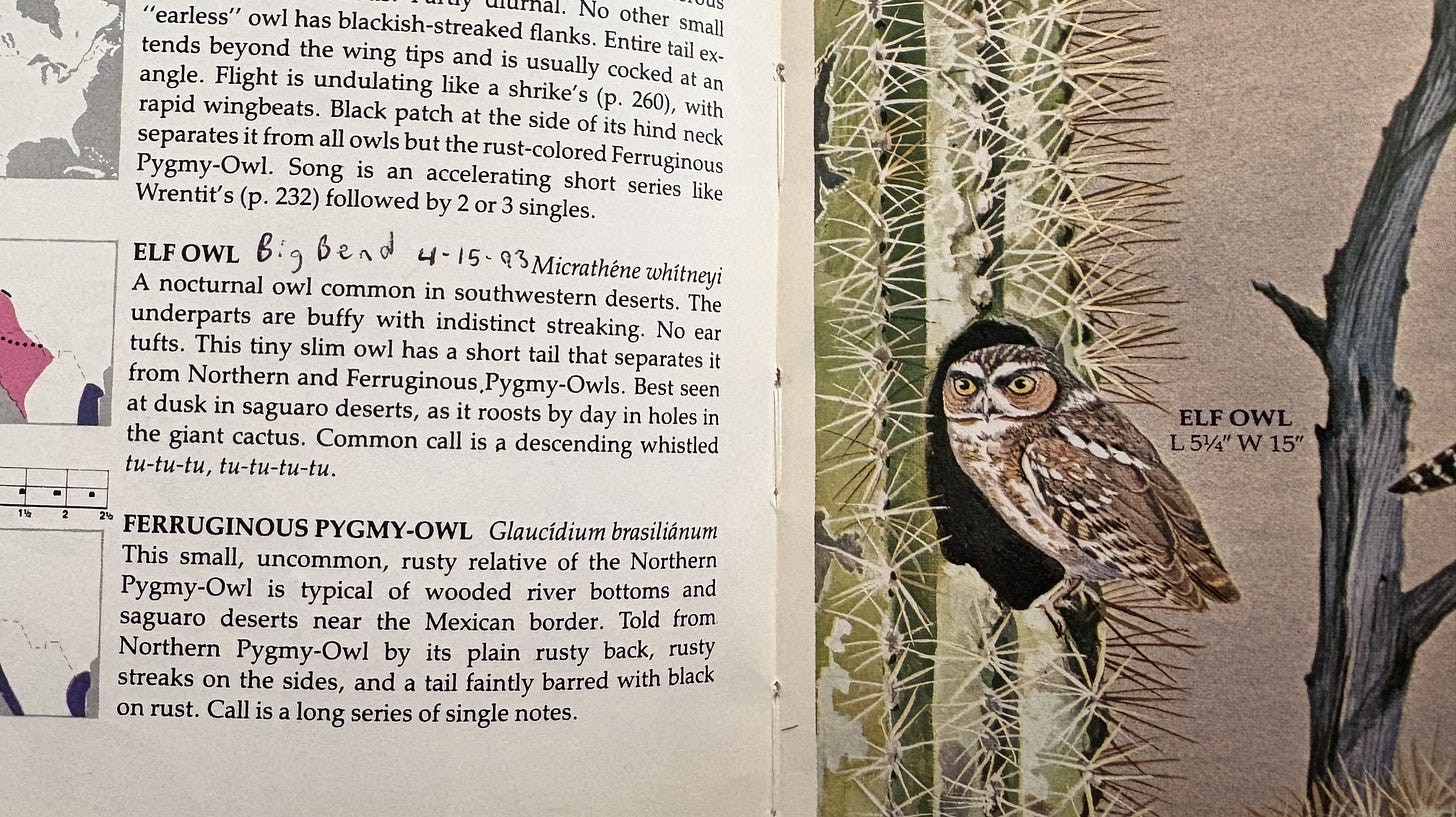
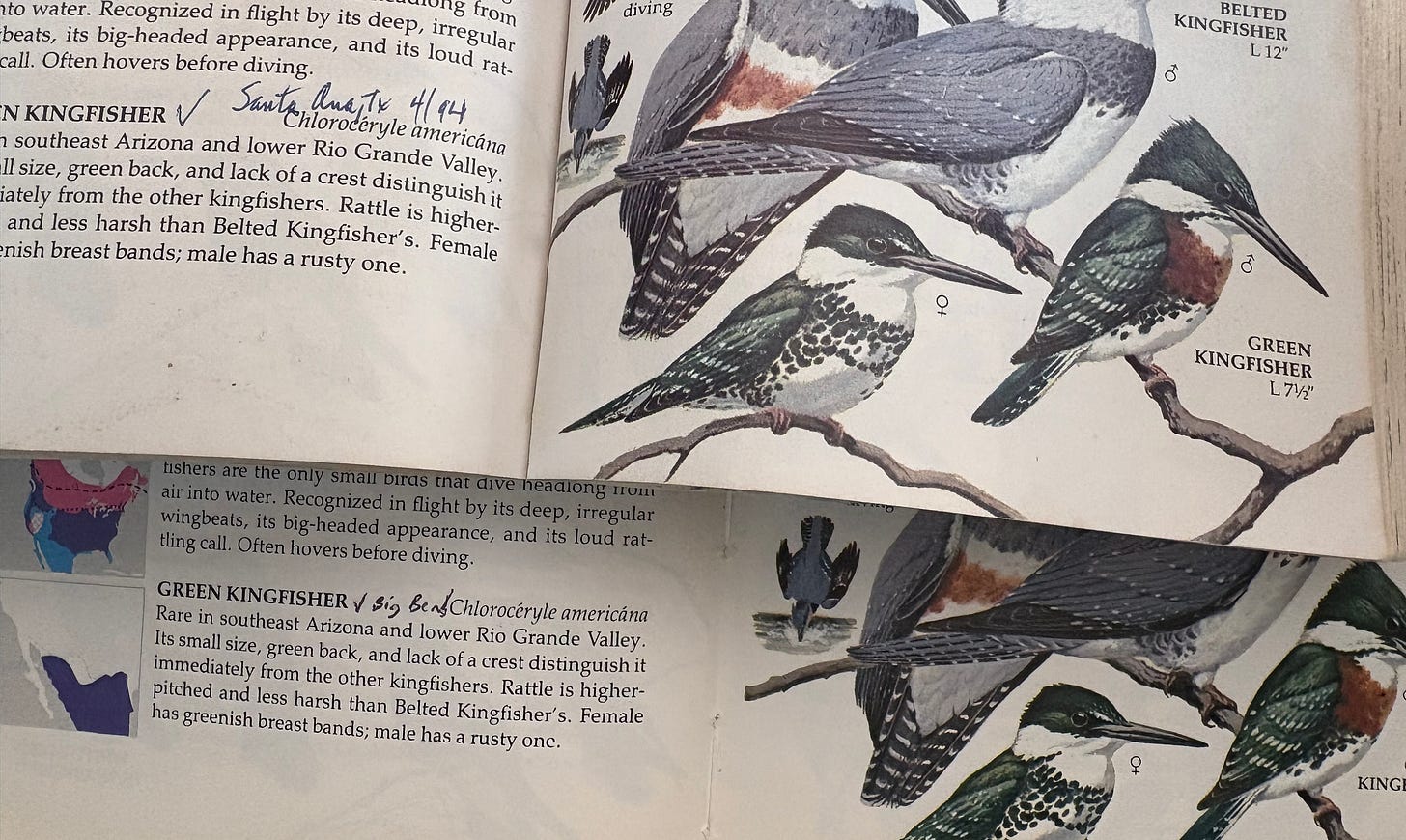
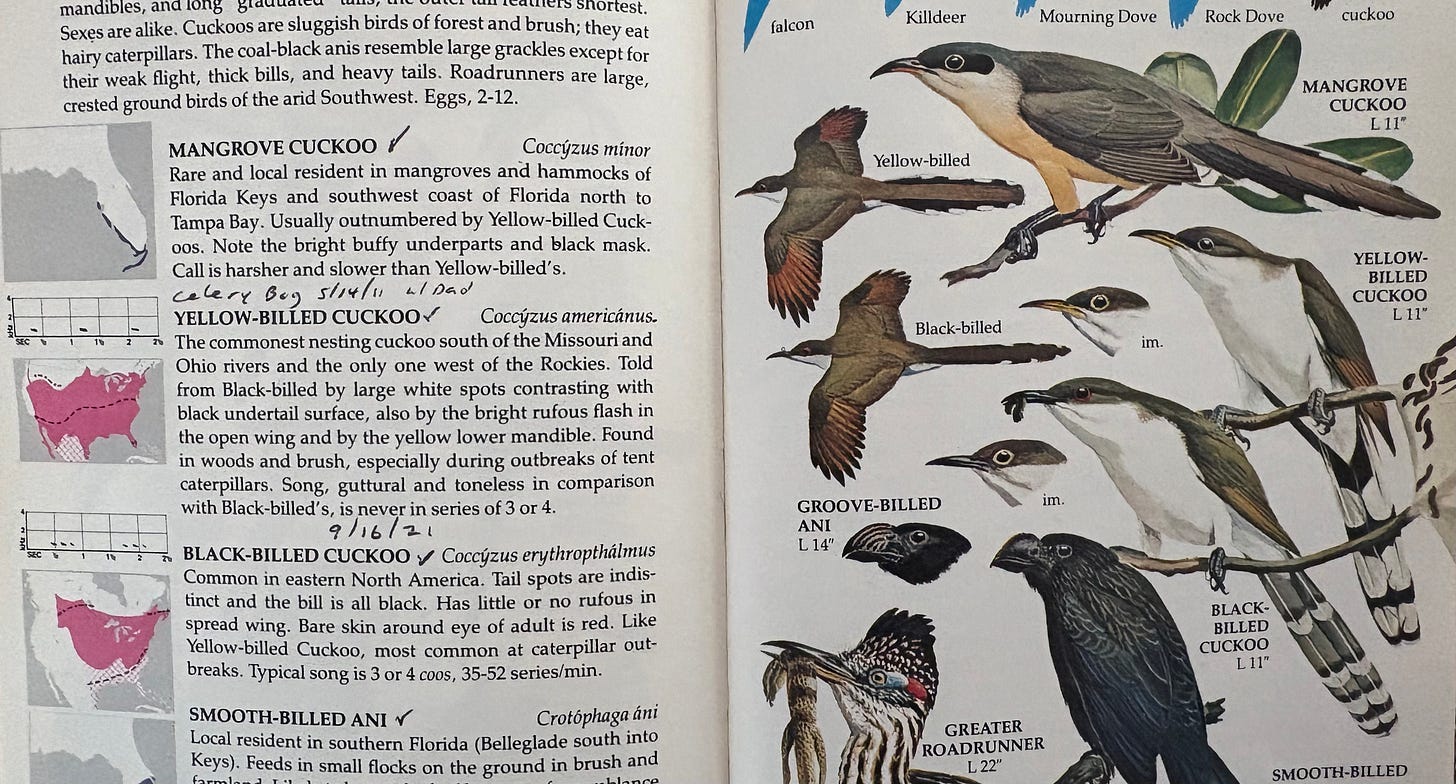
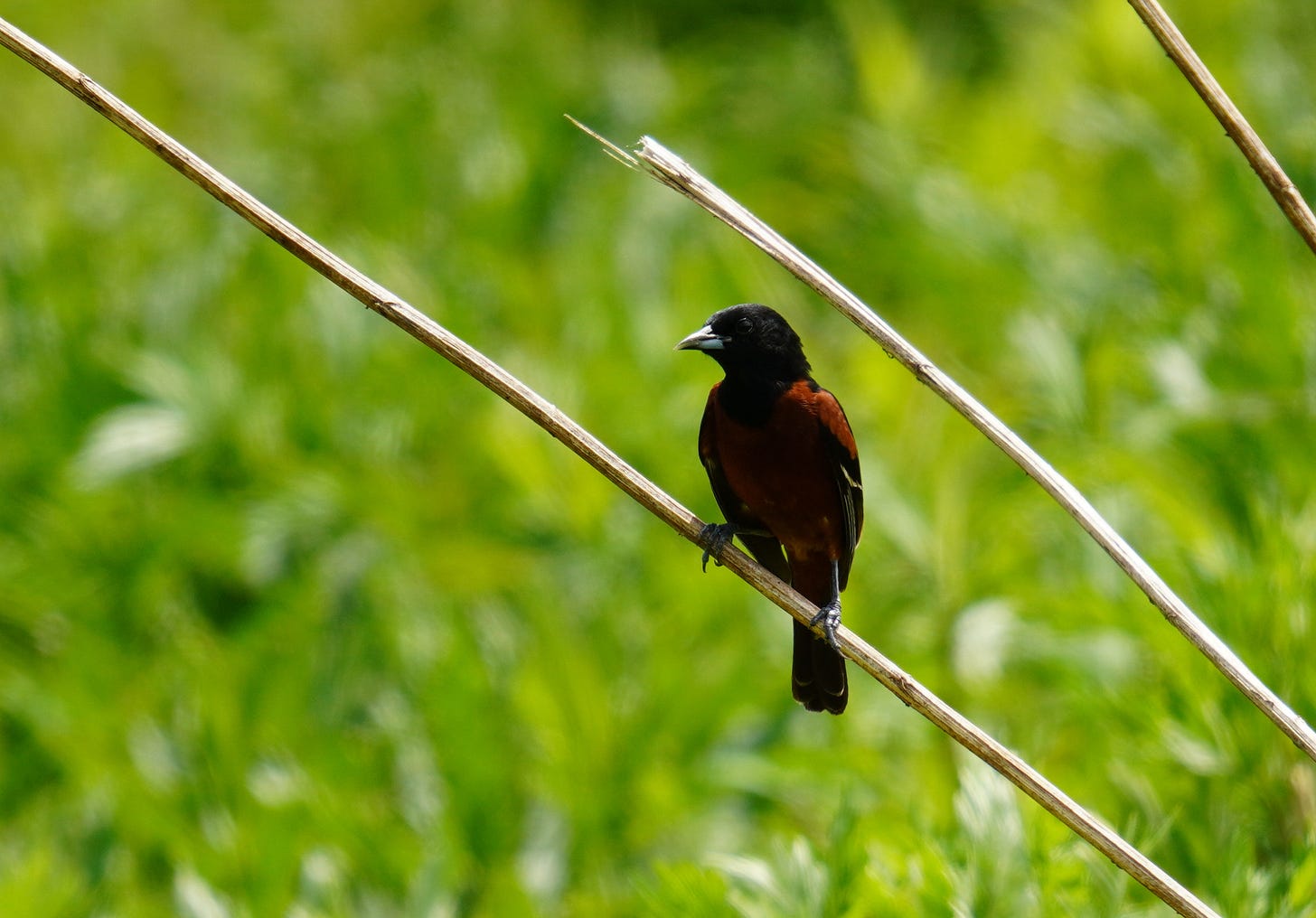
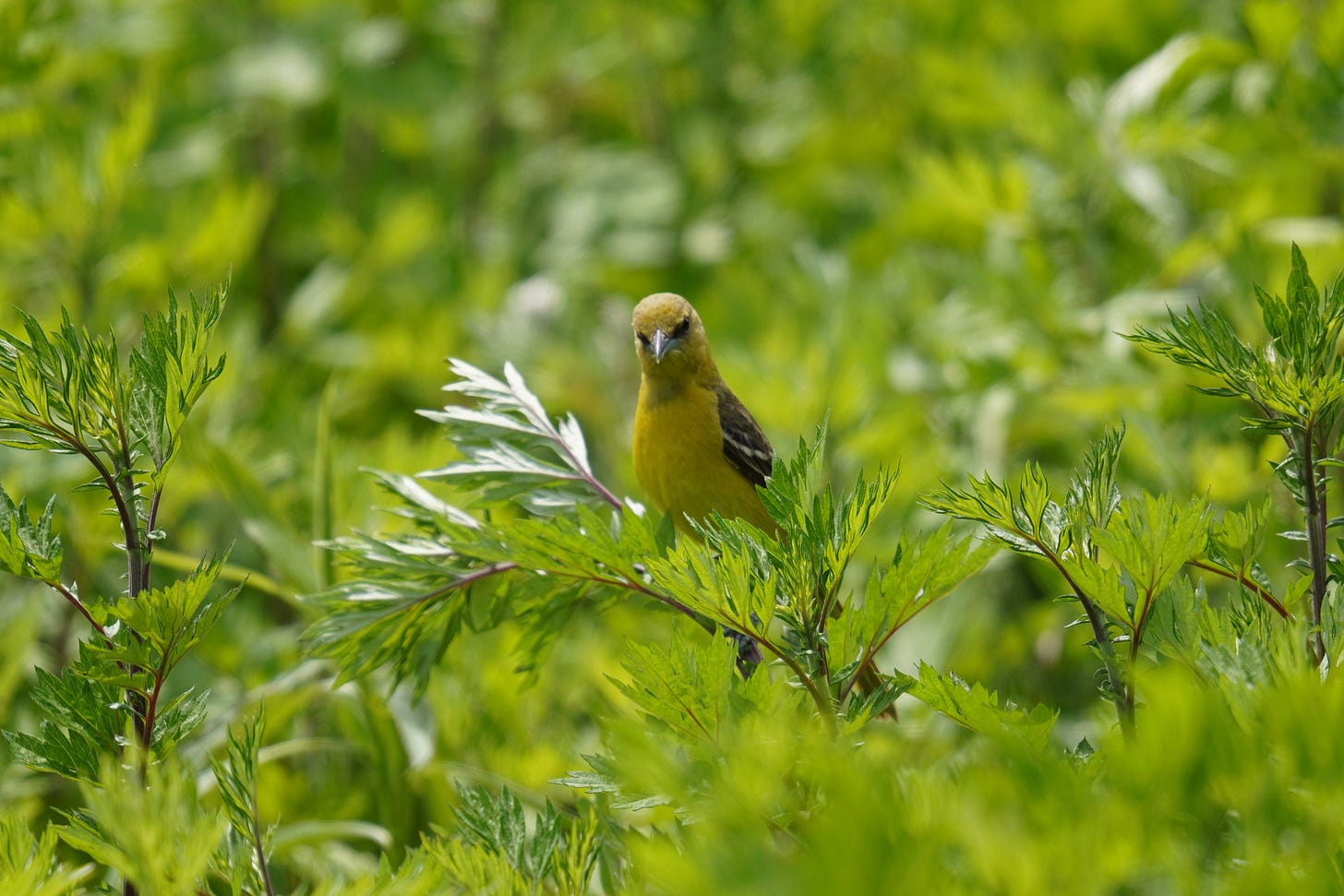
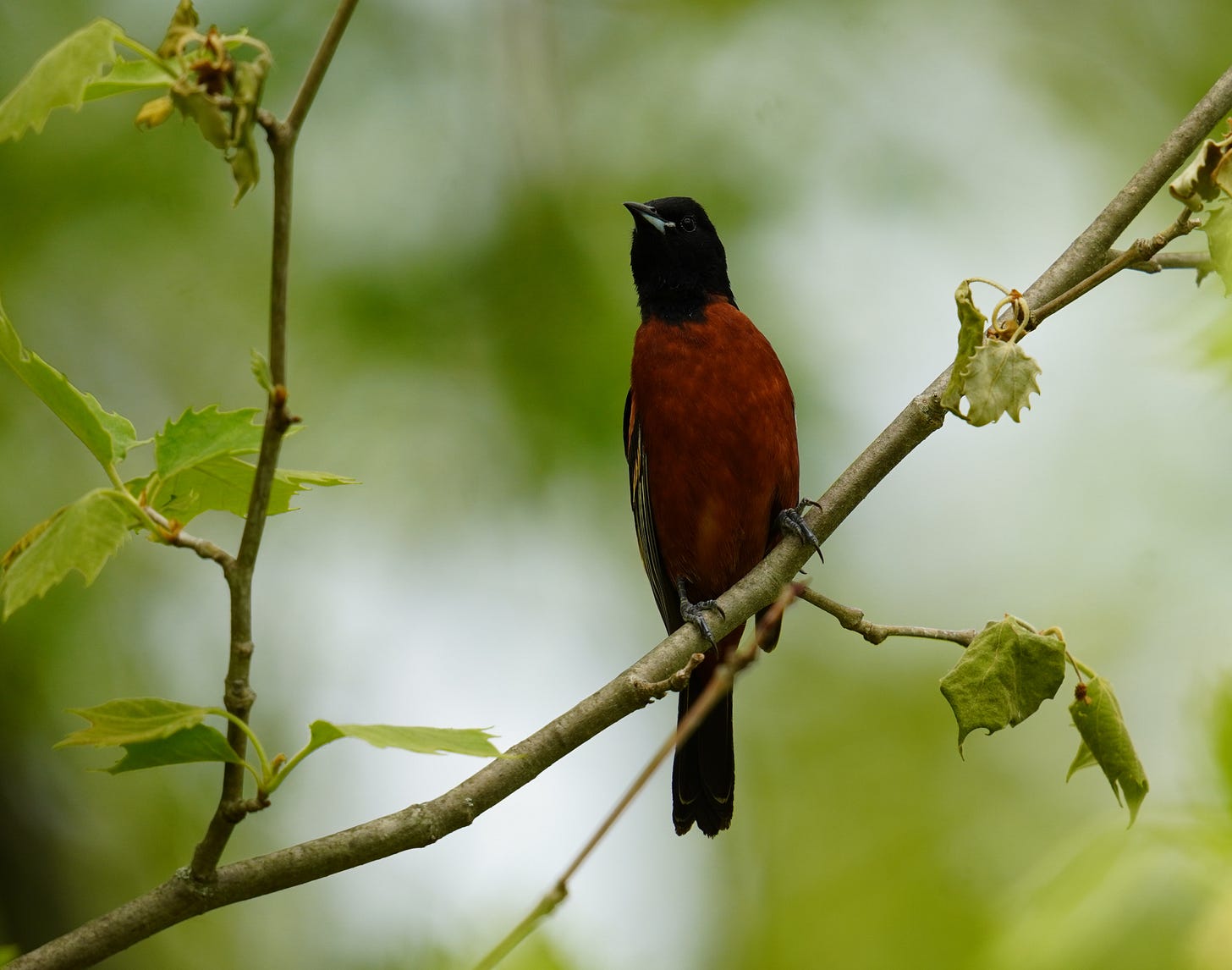
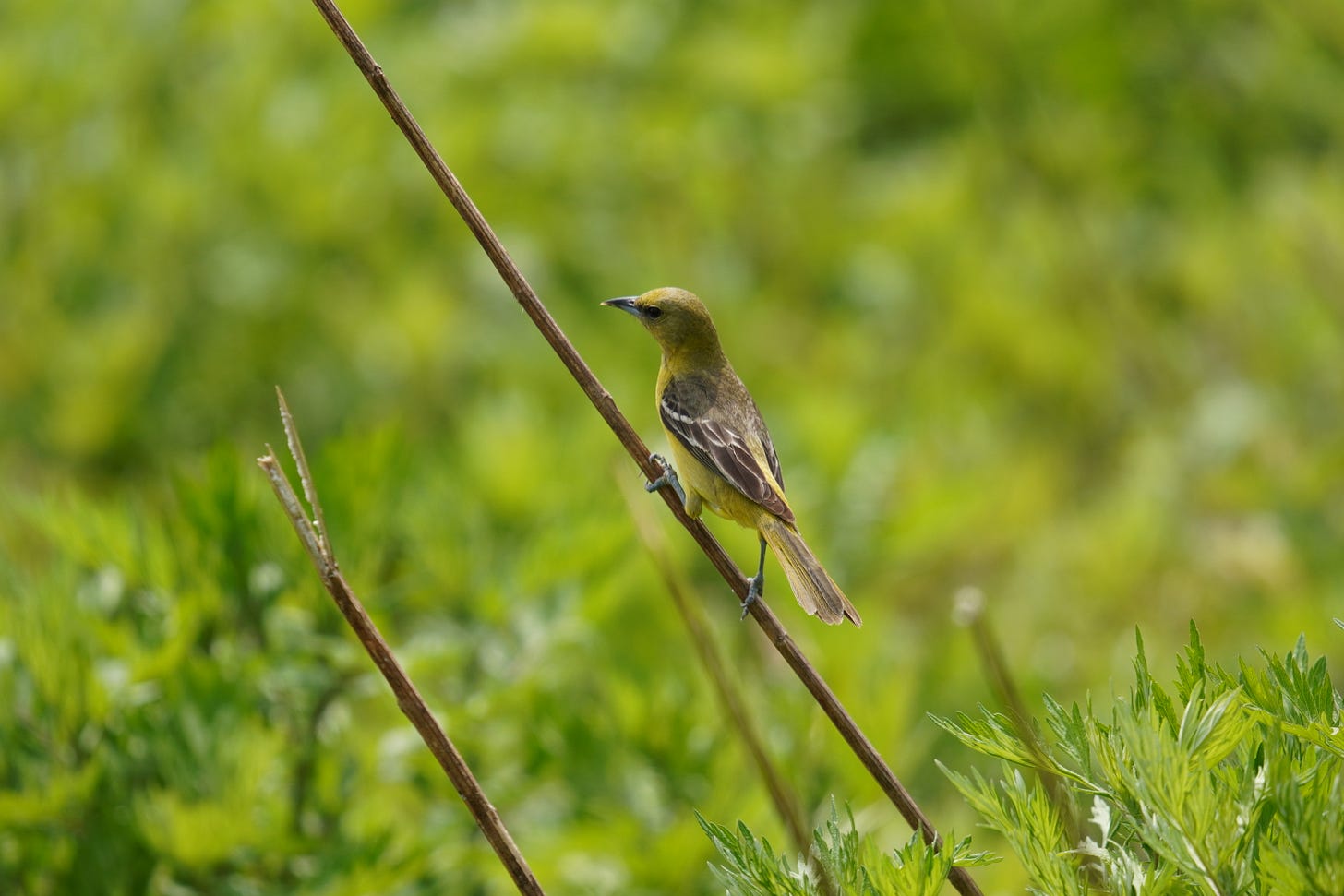
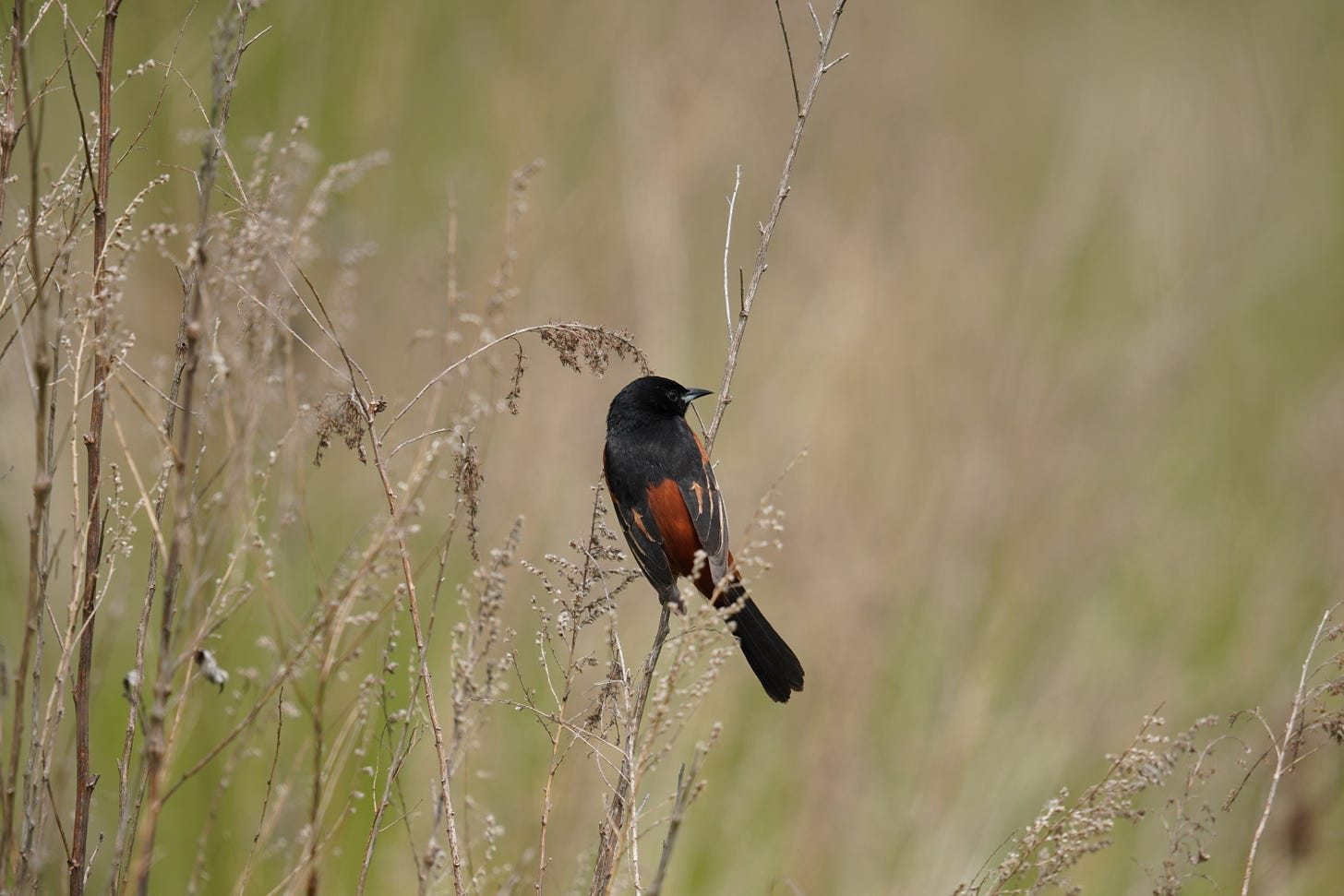
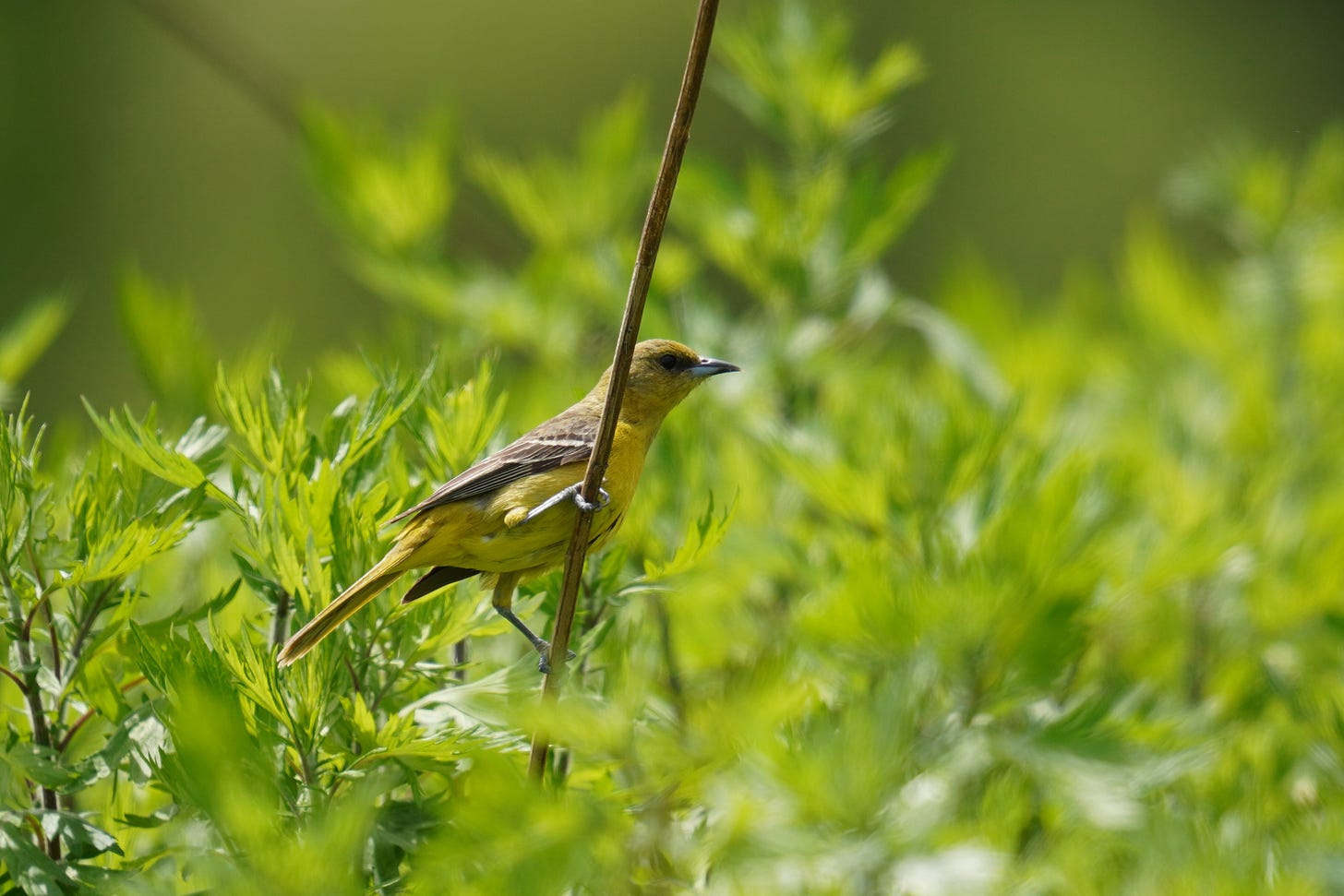
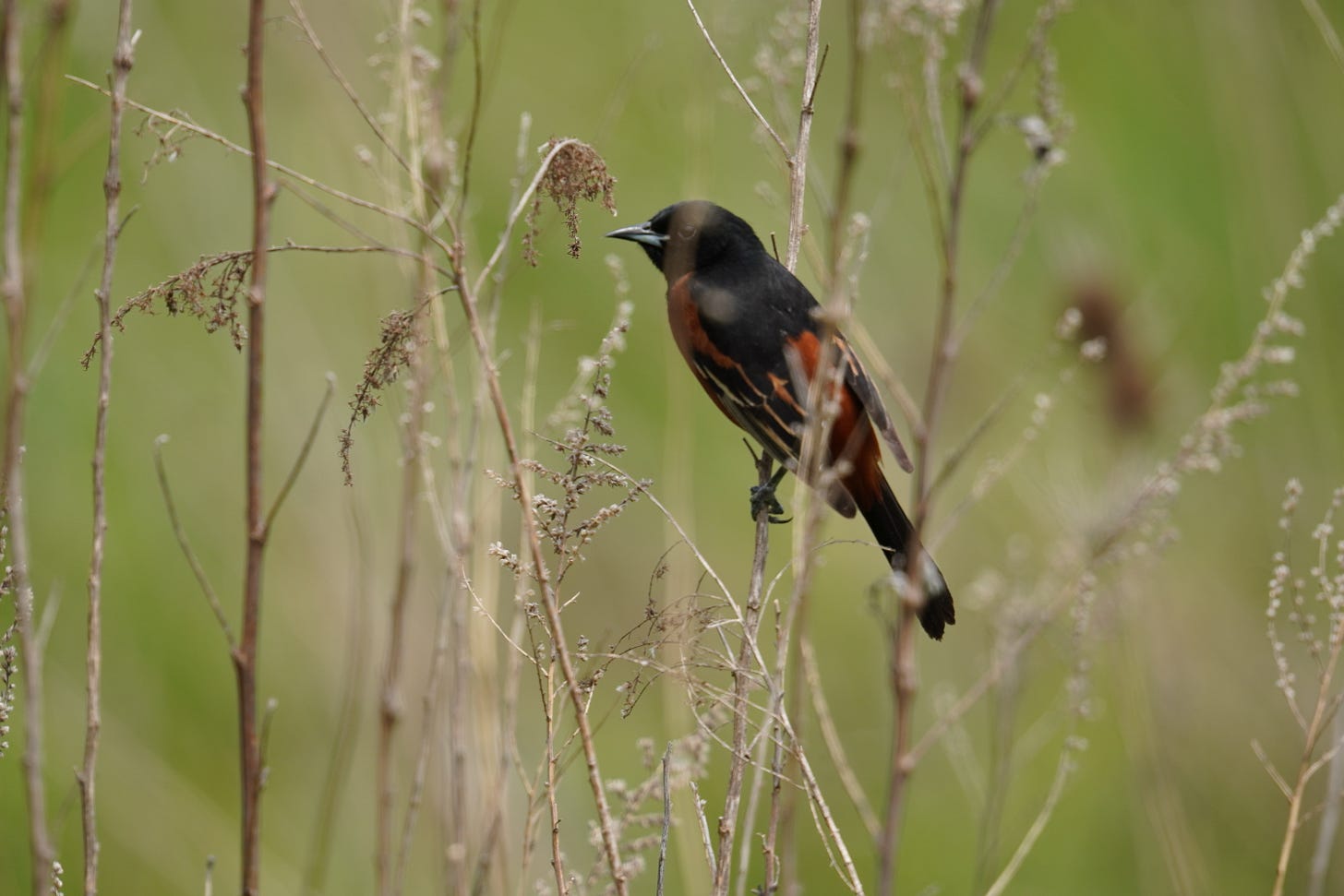
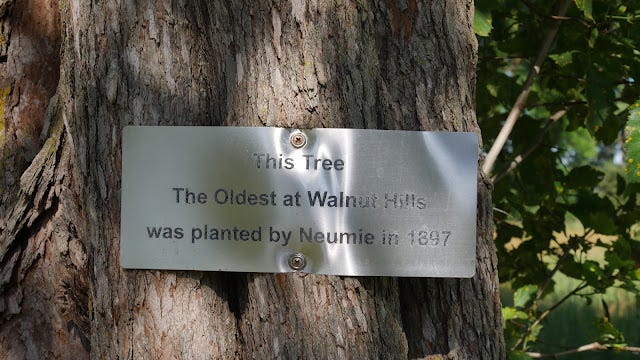
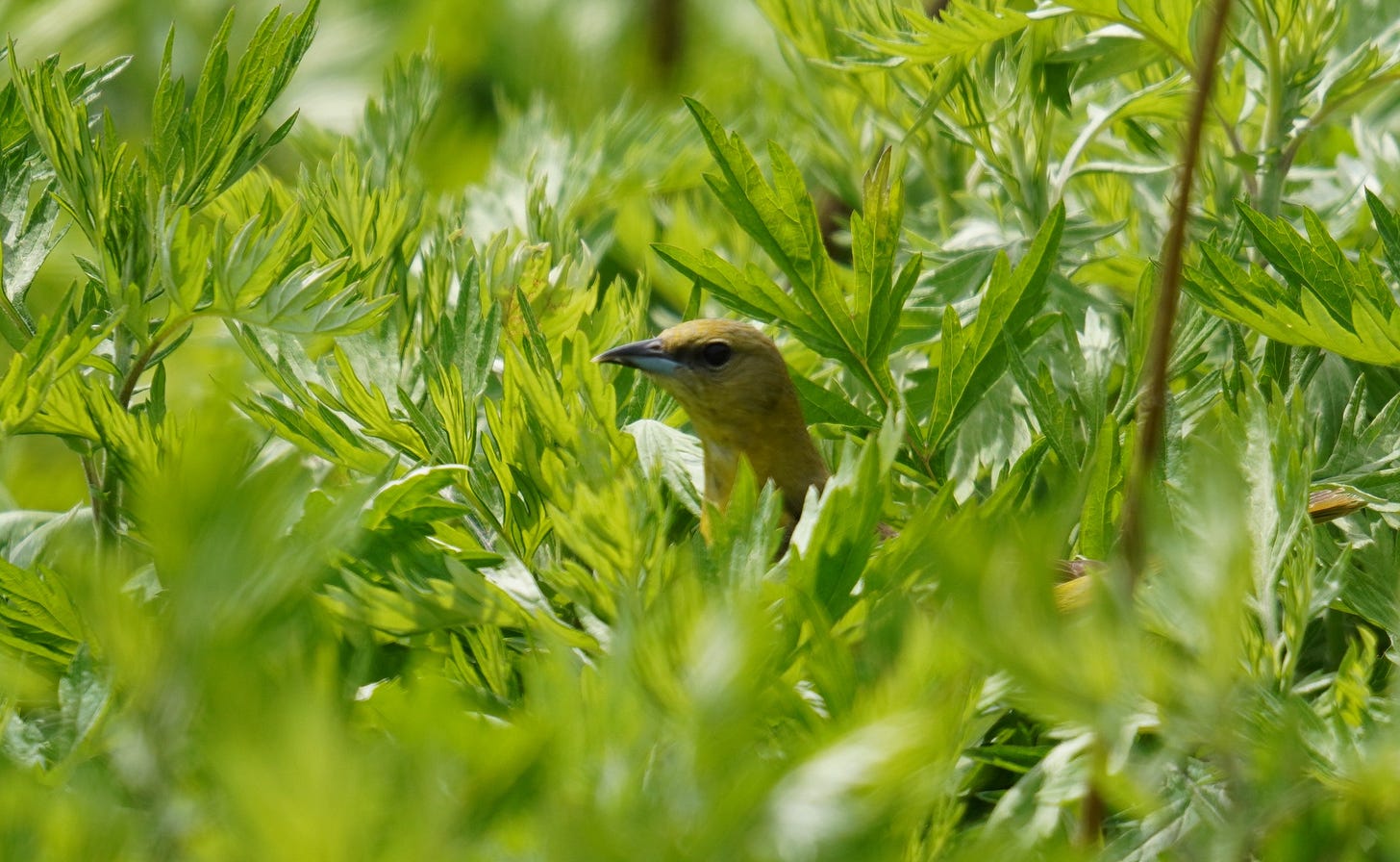
Great post Nate! I think my spark bird has to be the female Red Winged Blackbird. Up until that time I enjoyed taking pictures of birds (mostly sparrows & robins) but wasn’t going out of my way to look for them. One day I snapped a pic of what I thought was a sparrow (I have bad eyesight so the world is generally in soft focus for me 😂), only to upload my pics at home and realize that was no sparrow. It led me to wonder what other birds were out there that I was missing out on.
My spark birds? That’s a good question. I think it started with the ibis and kestrel. But there are so many, I can’t choose!